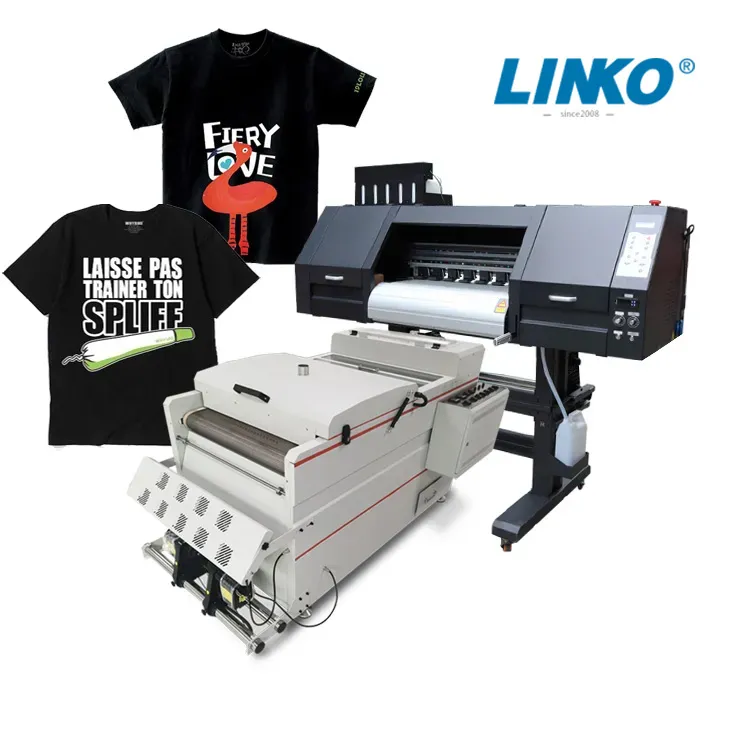Ultimate Overview to DTF Printing Techniques for Magnificent Textile Styles
Embarking on the trip of mastering DTF printing techniques can open up a globe of opportunities for producing visually captivating textile layouts. In this overview, we will explore the elaborate details of DTF printing, from understanding the fundamental basics to unraveling advanced shade methods that can raise your styles to new heights.
Understanding DTF Printing Basics
DTF printing, a process that involves moving layouts from an unique film to textiles using warmth and pressure, forms the foundation of textile printing techniques. This cutting-edge technique permits high-grade, lively designs to be perfectly transferred onto various textiles with accuracy and detail. The initial step in DTF printing involves producing or selecting a layout that will be published onto the textile. This layout is then published onto a special movie utilizing a DTF printer, which makes use of particular dyes or pigments to ensure shade accuracy and longevity.
The final result is a spectacular, resilient textile style that is washable, versatile, and immune to fading. On the whole, understanding the basics of DTF printing is vital for grasping this contemporary textile printing method.
Selecting the Right Textile Materials
Having established the foundational concepts of DTF printing strategies for fabric layouts, the next essential factor to consider depends on picking the appropriate textile materials to complement this cutting-edge procedure successfully. The success of a DTF print mostly depends upon the compatibility in between the chosen material and the printing strategy. When picking fabric products for DTF printing, it is important to take into consideration the textile's composition, weave, and texture. Fabrics that work well with DTF printing consist of polyester blends, spandex, nylon, and various other artificial products. These textiles typically have a smooth surface area that permits lively and in-depth prints. Additionally, the stretchability of these materials can accommodate the warm transfer procedure associated with DTF printing without distorting the style. It is a good idea to avoid all-natural fibers such as cotton or silk, as they may not generate the same level of print quality and toughness. By choosing the appropriate fabric materials, designers can make best use of the possibility of DTF printing to create magnificent and long-lasting textile layouts.

Mastering the Printing Process
To stand out in DTF printing strategies for fabric styles, understanding the printing procedure is essential for attaining consistent and top notch outcomes. The temperature, pressure, and duration of warm application have to be meticulously controlled to guarantee proper bond of the style to the textile. By sharpening each of these steps in the printing procedure, designers can continually produce sturdy and stunning textile layouts with DTF printing methods.
Enhancing Styles With Color Techniques

Furthermore, trying out shade slopes can bring a feeling of websites motion and fluidness to the layout. By mixing shades seamlessly, a gradient impact can be accomplished, adding a modern-day and vibrant touch to the fabric design. In addition, utilizing shade blocking methods can create striking and strong visuals by comparing various strong shades in unique areas of the style.
Additionally, including metallic or neon colors can offer a eye-catching and special element to the fabric style, making it attract attention and exude a feeling of vibrancy. When tactically used, these color methods can raise the general aesthetic allure of fabric layouts, making them a lot more unforgettable and captivating.
Troubleshooting Common DTF Printing Issues
After checking out various color techniques to boost textile designs, it is essential to deal with common DTF printing issues that may emerge throughout the manufacturing process. Additionally, problems with picture clarity and sharpness can take place due to low-resolution photos or incorrect printing methods. By being aware of these typical troubles and implementing the needed troubleshooting steps, you can boost the overall high quality of your DTF printed fabric layouts.
Verdict
Finally, mastering DTF printing strategies is vital for creating stunning textile designs. By recognizing the basics of DTF printing, choosing the ideal products, and boosting styles with color methods, one can attain outstanding outcomes. It is essential to troubleshoot common problems that might try this out emerge throughout the printing process to ensure an effective outcome. With technique and interest to detail, one can produce one-of-a-kind and stunning textile layouts using DTF printing strategies.
DTF printing, a process that includes moving designs from an unique movie to textiles utilizing warmth and pressure, develops the structure of textile printing methods.Having actually established the foundational concepts of DTF printing strategies for textile styles, the following crucial factor to consider exists in selecting the proper fabric products to complement this ingenious procedure successfully. By picking the ideal textile products, designers can take full advantage of the possibility of DTF printing to create long-lasting and stunning textile styles.
To stand out in DTF printing strategies for fabric layouts, mastering the printing process is important for accomplishing high-quality and consistent results. DTF Printing. By developing each of these steps in the printing process, designers can regularly generate resilient and sensational fabric styles with DTF printing methods